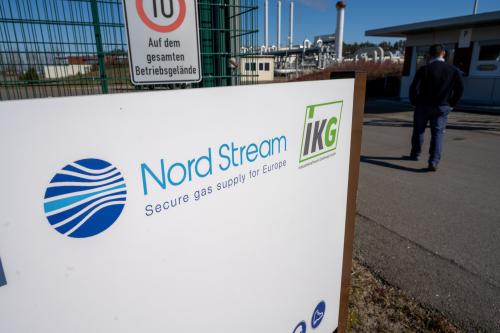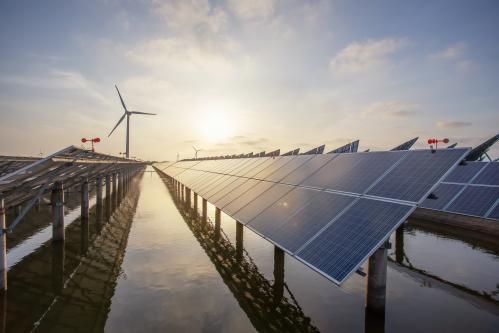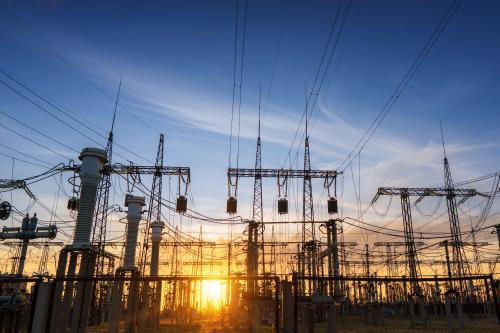At COP27, in early November 2022, South Africa positioned itself as the “champion of the South” in the global effort to curb carbon emissions. Not only did the country present the decommissioning of its first coal-fired plant (the so-called Komati project), Cyril Ramaphosa, South Africa’s president, also unveiled an ambitious investment plan for a Just Energy Transition (JET). The cost of this plan, estimated at about $97 billion (R1.5 trillion) over the next five years, raised some eyebrows in both the national and international communities.
Although this cost is substantial, we argue that the JET should be implemented urgently, for two reasons: It would bring considerable benefits to the country’s economy and its people, and the required financing would become available with the right set of domestic policies and external assistance.
Let us start by demonstrating that, even if you are skeptical about the climate benefits of reducing carbon emissions, a just energy transition would be economically justified for South Africa; in fact, by 2030, it is likely to yield economic gains at least double the above projected costs, as shown in Figure 1.
Figure 1. How much would a just energy transition cost in South Africa (2023-2030)?
Source: World Bank’s calculations
Most of these gains would come as the country shifts away from coal toward low-carbon energy sources (mainly renewables), already the least costly option for South Africa due to its aging and unreliable coal power plants. By investing in renewables (and transmission), the country can quickly increase electricity supply, which will help eliminate the extensive load-shedding that is projected to cost at least $24 billion to the economy in 2022. By simple extrapolation, the country could therefore save about $192 billion by 2030 ($24 billion per year for eight years) by eliminating load-shedding.
In addition, a just energy transition would improve the country’s competitiveness on global markets by reducing the carbon intensity of its exports. Should the European Union introduce a carbon tax at the border, about one-third of South Africa’s exports would be at risk—a potential loss of $8 billion per year, or $64 billion by 2030. A third benefit would be lower air and water pollution, which would reduce the risks of early deaths and improve workers’ health and productivity.
The combination of these three benefits would accelerate South Africa’s economic growth and help create new jobs in several green and low-carbon sectors (such as renewables and batteries). We estimated, in the Country Climate and Development Report recently published by the World Bank, that the JET could create as many as 1 million jobs from 2023 to 2050, which will be several times higher than the number of jobs projected to be destroyed (about 300,000). However, South Africa will need to implement both adequate safety nets and active labor programs to mitigate negative impacts on dismissed workers and local communities.
The second reason for supporting the JET is that its costs are not insurmountable: South Africa can find the resources to finance it. The cost of the transition falls into three main categories:
- New investment in power generation, primarily in renewable energy—about $66 billion until 2030: Given the age and condition of the existing coal-fired power plants, renewables are the least-cost option to expand the generation sector.
- New investment in power transmission and distribution—about $11 billion until 2030.
- New measures and investments to cope with the economic and social damages to workers, local communities, and municipal governments associated with the decommissioning of coal-fired plants (including mines)—about $20 billion until 2030.
Arguably, South Africa can attract private domestic and foreign resources to finance new investments in power generation (the largest segment in Figure 2). Developers have been keen to invest in renewables, as demonstrated by the success of the different renewable energy programs: As much as 6,000 MW in renewables were added to the grid between 2012 and 2022. More could come if the country were to unleash the potential of the private sector by streamlining administrative and regulatory procedures and opening the market to more competition. By taking this approach, Vietnam, for example, attracted more private investment in solar energy than did the entire region of sub-Saharan Africa in 2020.
Figure 2. Financing sources for the transition, 2023-2030 (USD billion)
Source: World Bank’s calculations
This would leave the country to find about $31 billion (or $3.9 billion per year). The government spent about $3 billion in 2021/22 to support the financially distressed national electricity company (Eskom). This assistance could potentially be cut by half—should the government successfully implement a plan to return Eskom to its path of historical excellence, saving as much as $12 billion in taxpayers’ money in 2023–30. Another source of financing could be by advancing the broadening of the carbon tax, which the National Treasury has scheduled for 2026. Eliminating the current exemptions and gradually increasing the tax rate could yield around $8 billion in additional revenue by 2030.
The financing gap would therefore be around $11 billion in 2023–30, which could be raised from external sources. The international community is ready to provide concessional finance to support South Africa’s decarbonizing effort, as it is partly a global public good. Five donors (the European Union, the United States, Germany, France, and the United Kingdom) have committed to allocating $8.5 billion for this purpose over the next five years, while international finance institutions (particularly the World Bank and the African Development Bank) stand ready to assist South Africa through, for example, budget support and blended financial instruments to reduce the risks for private investors.
Against this backdrop, we hope that even climate skeptics would support the implementation of the JET in South Africa. A JET would clearly help lower global carbon emissions, but the primary benefit of a rapid energy transition is to the country itself. The gains to South Africa’s economy and its people would significantly exceed the cost of the transition, and the required financing can be leveraged from available domestic and external resources.









Commentary
2 reasons why climate skeptics should support South Africa’s just energy transition
November 17, 2022